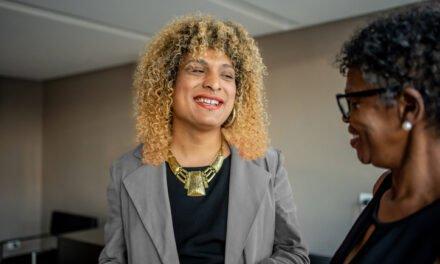Often in my work as a professional developer of educators and leaders, I remind participants that becoming culturally responsive is a journey, and that one cannot expect to become culturally proficient simply because they attended a diversity training or two. In fact, I share that the journey never really ends, not even for someone like myself who works in this space and considers herself a fierce advocate. You see, I realized recently, that even the beliefs we hold near to our hearts can sometimes be challenged, forcing us to dig a little deeper.
In August of 2017, I wrote a post exploring issues of educational equity and opportunity gaps for historically marginalized student groups. There I discussed the widely used Equal vs. Equitable graphic of the kids on the boxes. I challenged the reader to begin to dismantle the very mindset that allows us not to even question the necessity of the figurative barriers, rather than provisioning the ways to get around them. I have literally referenced this graphic hundreds of times to make this point. In fact, the graphic is so popular that you can learn more about its original purpose and evolution here.
Imagine my surprise when I recently read an article titled “This Equity Picture is Actually White Supremacy at Work.” The writer acknowledged the value this graphic has served in advancing the conversation, but also said that now it’s time to move on. What? Move on from my beloved graphic that I use all day everyday to bring home the point that we must do better by our kids? I was literally called out in the piece: “even those who ‘center equity’ feed into this framework – that people of color need our resources because they are too broken to have their own.” I began to wonder if I had been thinking about this all wrong, especially when I read this:
“Imagine if you will, 3 people —all the same goddamn size. The ground beneath them slopes, buckling beneath one person so significantly that person cannot see over the fence at all. The foundation on which these people stand is unequal, and that foundation, might we even say systemic, difference leads to some being able to watch the baseball game, while others cannot.”
Here I was focused on the fence all this time, instead of addressing the fact that the playing field isn’t level to begin with. While this viewpoint is still somewhat flawed, I’ve been trying to unpack the metaphor this represents. There are various iterations of this image where the fence is redesigned or modified to be chain linked and therefore “see-through,” but it still serves as a barrier, nonetheless.
Here I was focused on the fence all this time, instead of addressing the fact that the playing field isn’t level to begin with. Click To TweetI hold on to my belief that the goal is that we work to remove systemic barriers, and there’s a part of me that considers the unlevel playing field to be yet another barrier to address. But the author here is making a point that I had not considered; it’s not just the fence that precludes the students from seeing the game, but also the context of their surroundings or circumstances. Address those issues first, so we don’t have to worry about the barriers because they will be equipped to get around them.
This can’t be unpacked separately from the issue of race and marginalization. If, for the sake of this discussion, these are all children of color (or students with disabilities or girls versus boys, or any marginalized group that suffers from a lack of access and privilege), then we must also ask ourselves some tougher questions. Who is at the fence in the first place? What implicit biases have led us to believe that difference is a deficit? If we believe the image, do we act with an approach that addresses all difference (race, gender, ability, socioeconomic status) as a deficit that we must accommodate?
If we believe the image, do we act with an approach that addresses all difference (race, gender, ability, socioeconomic status) as a deficit that we must accommodate? Click To TweetThese questions forced me to ask one more: How did we get here? We often address the “achievement gap” or “opportunity gap” and the impact of low expectations, but James Noonan Ed.D referenced the “Belief Gap” in 2015. More recently in Education Post, this phenomenon is described as “the gap between what students can achieve and what others believe they can achieve.”
I began to marry these ideas. Could it be that when thinking about underserved populations, we operate under an assumption that they are inherently lacking (the skills, abilities, resources, desire) to meet the threshold (the line of sight above the “fence”) and therefore plan for the assumed deficit (by getting the appropriate number of boxes ready to hand out)? As a result, are we doing these students a disservice by having them internalize a belief that they can’t have a seat in the ball park, and that no matter what efforts they make, the ballpark is not accessible to them? In doing so, are we also perpetuating the notion of inferiority—which to the authors point, feeds into white supremacy?
As a result, are we doing these students a disservice by having them internalize a belief that they can’t have a seat in the ball park, and that no matter what efforts they make, the ballpark is not accessible to them? In doing so,… Click To TweetTough questions, of which I’m still exploring the answers and will continue to unpack because the answers don’t come easy, and this is a journey. Being open to diverse perspectives and allowing your thinking to be challenged is part of that work. Challenging perspectives is how we learn.
Being open to diverse perspectives and allowing your thinking to be challenged is part of that work. Challenging perspectives is how we learn. Click To TweetDo you have another perspective when looking at the Equal vs. Equitable metaphor? Check out the 4th Box Toolkit and share your thoughts and ideas in the comments.




















This is a very well done and valuable piece. Thank you!!!